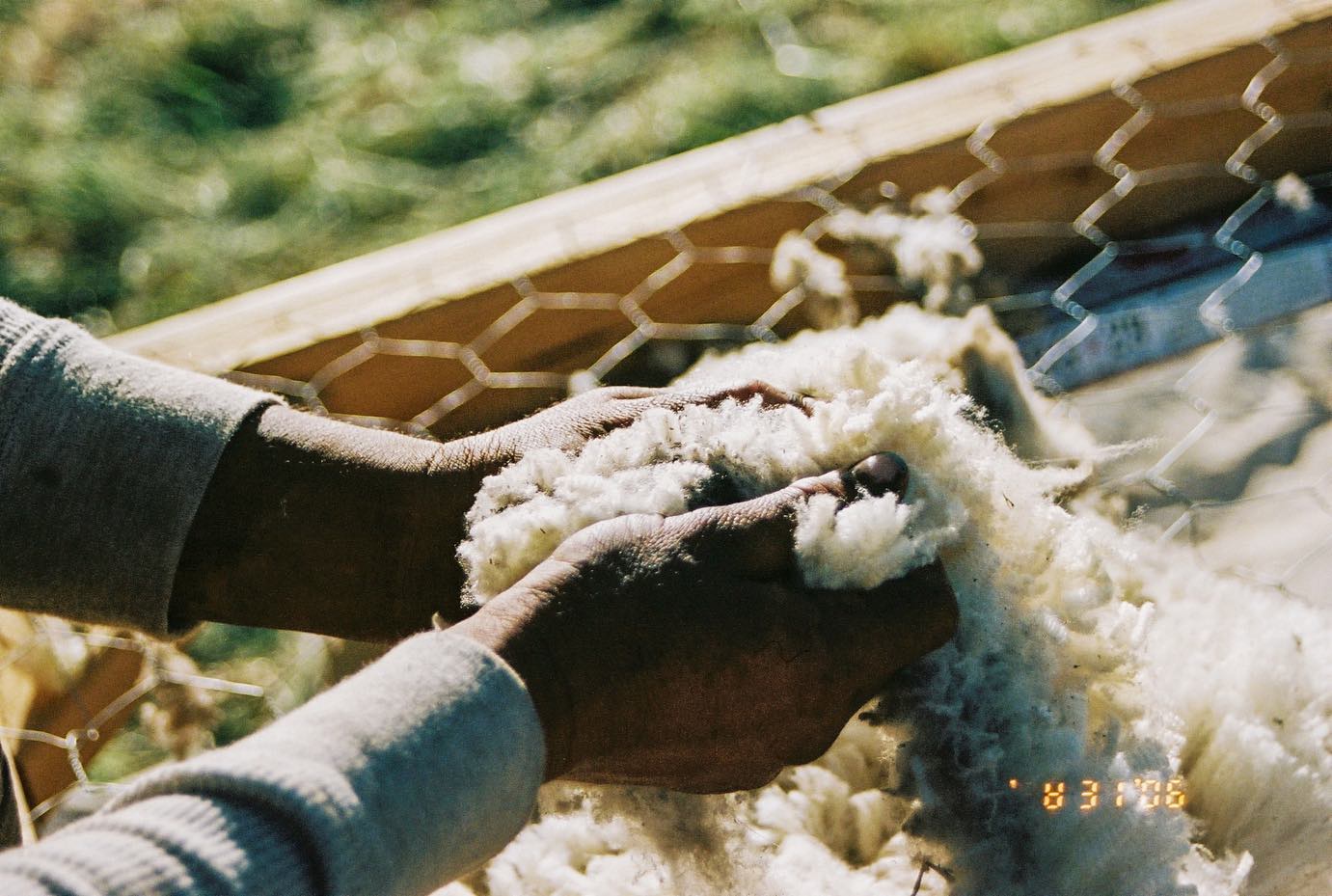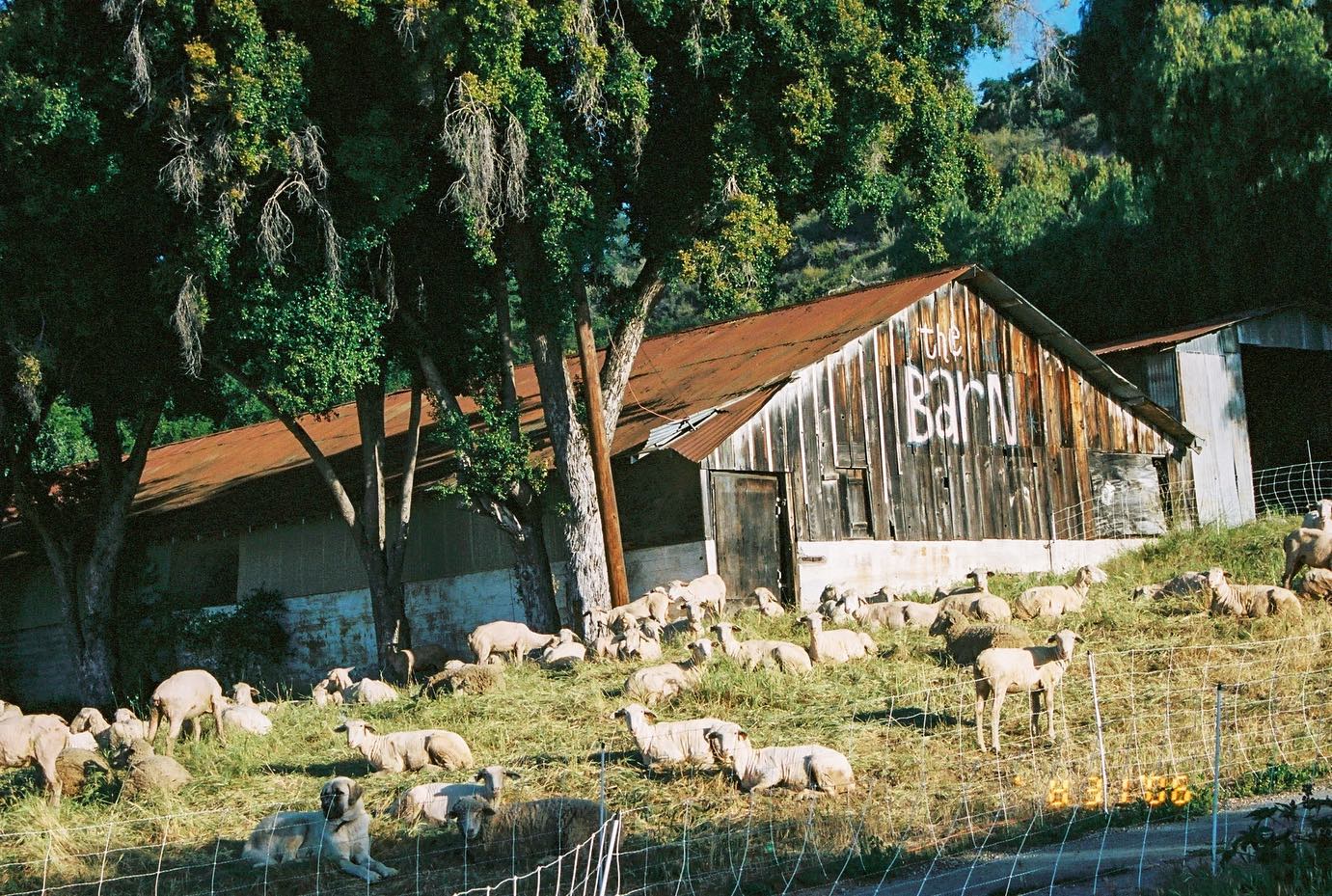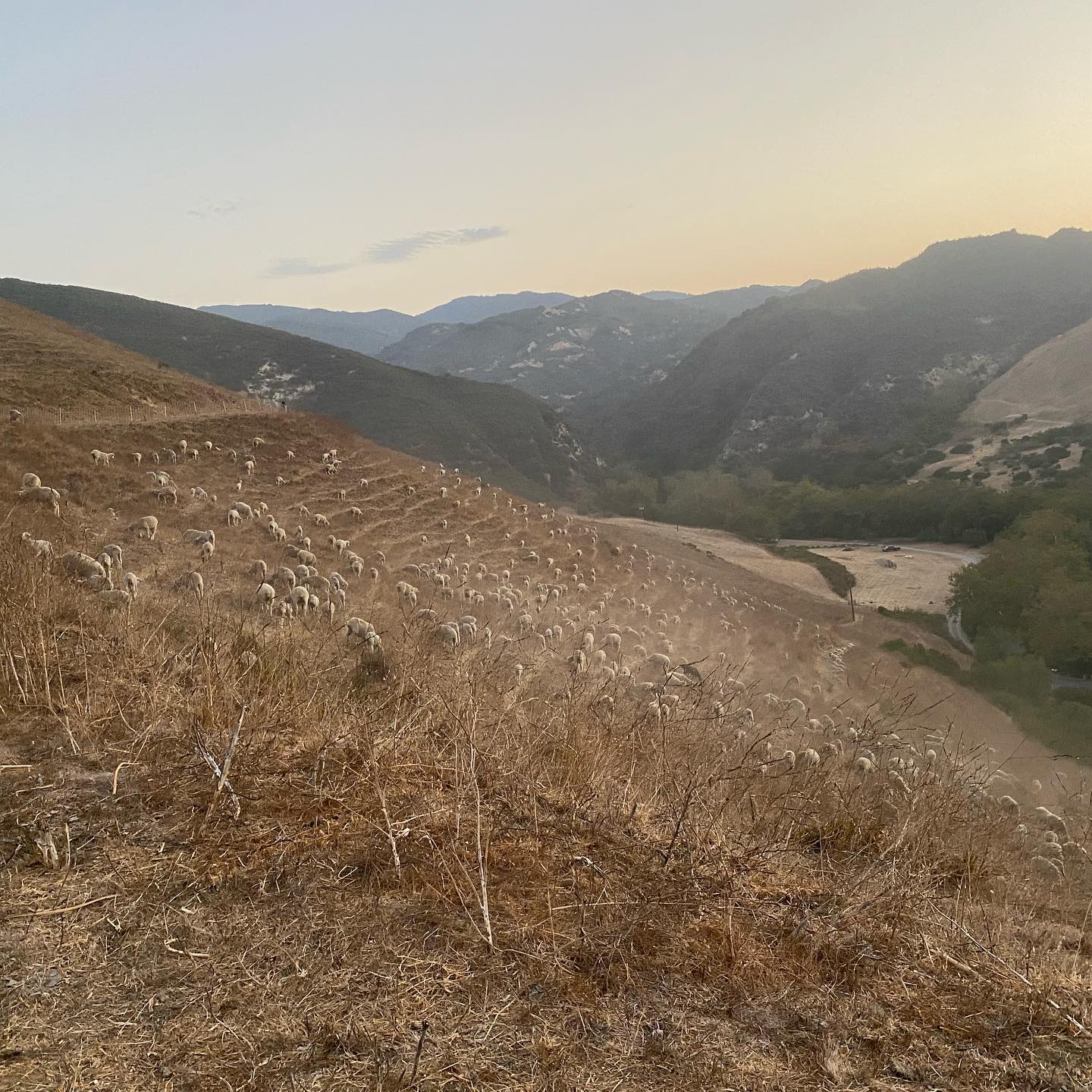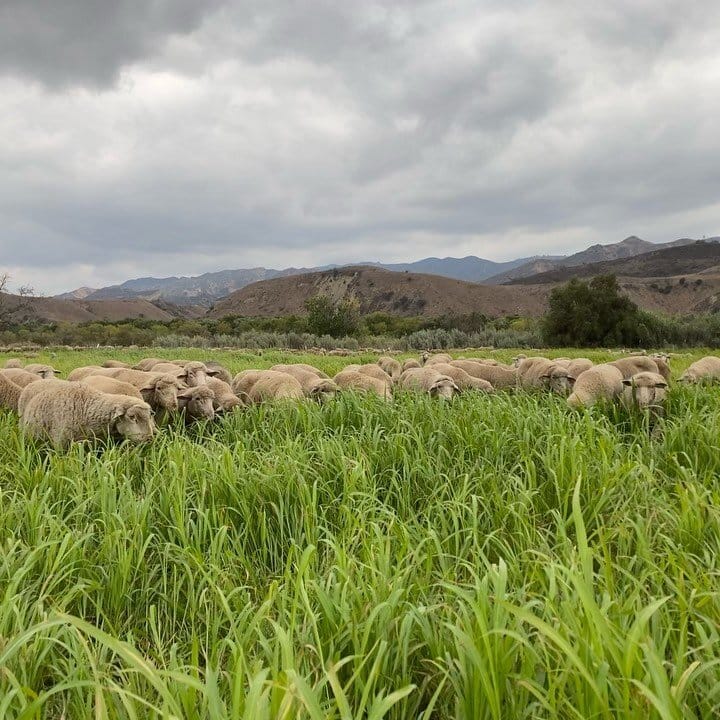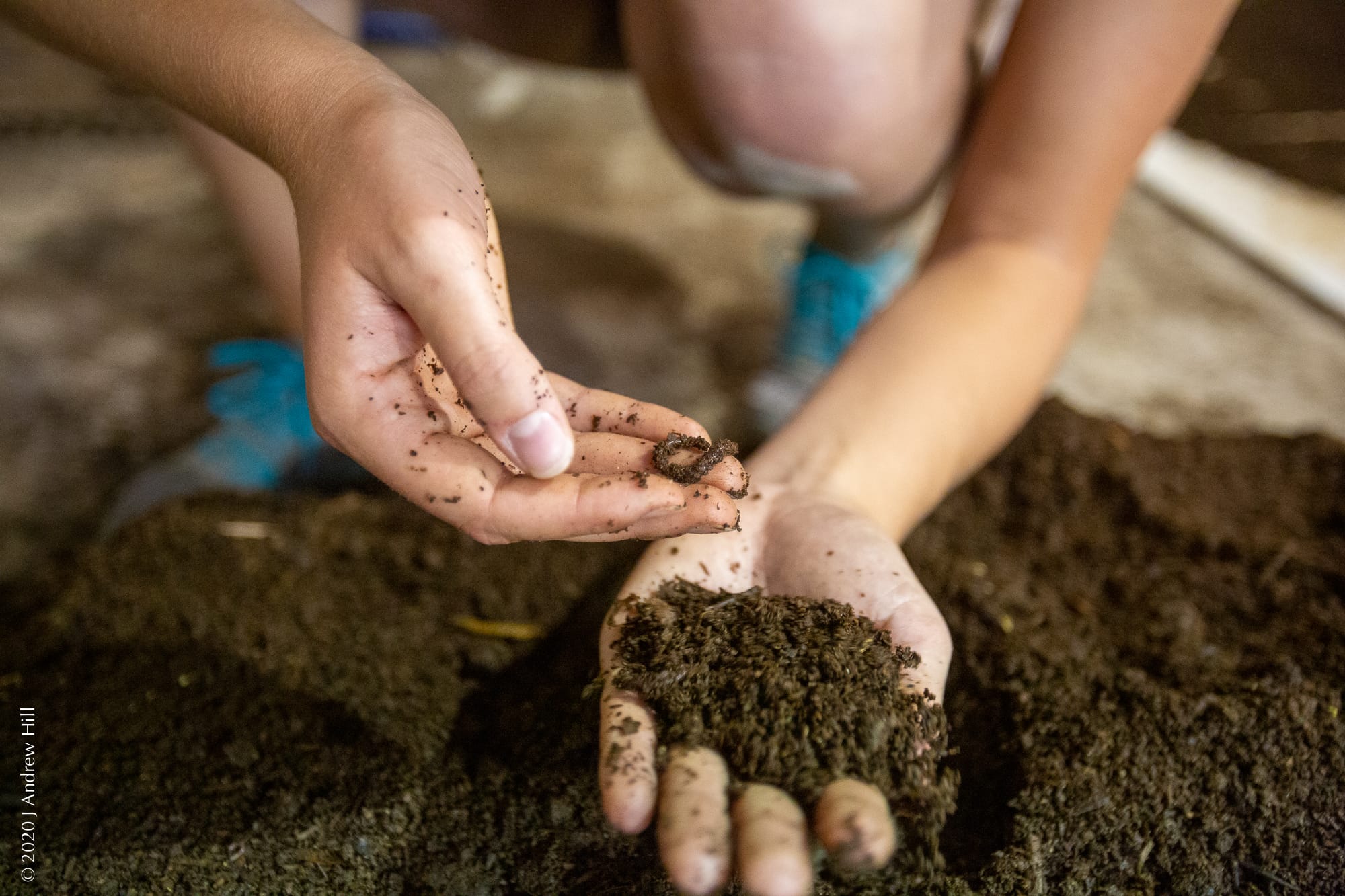As you drive along the Gaviota Coast, you may see dots of white in the rolling coastal foothills, a sure sign that sheep are at work. Founded in 2018 at Quail Springs in the high desert of Cuyama Valley, Cuyama Lamb grazes sheep to restore coastal grasslands, mitigate wildfire risk, and support healthy agricultural ecosystems while producing ethically raised food and fiber. As they have honed their mission over the past few years, owners and shepherds Jenya Schneider and Jack Thrift Anderson hope Cuyama Lamb can serve as a regenerativeEnvironmental Regeneration: Systems of growing food that reclaim carbon and nutrients on the land by increasing biodiversity, building soil health, and improving watersheds to produce healthier food and lessen the impacts of climate change. and replicable model for our region that is rooted in the nexus of climate change, ecological diversity, and food system resilienceFood System Resilience/Resilient Food System: A food system that can withstand and recover from unforeseen disturbances and changes over time to supply sufficient, appropriate, and accessible food for all..
Integrated crop-livestock management and rotational grazingRotational Grazing: Rotational grazing is the practice of containing and moving animals through pasture to improve soil, plant, and animal health. Only one portion of pasture is grazed at a time while the remainder of the pasture “rests.” To accomplish this, pastures are subdivided into smaller areas, referred to as paddocks, and livestock are moved from one paddock to another. Resting grazed paddocks allows forage plants to recover and deepen their root systems. are two examples of how Cuyama Lamb works with food producers to support healthy agricultural ecosystems. By bringing sheep into the field, ranch, orchard, or vineyard, the animals form a synergistic relationship with the land, increasing crop production, soil health, nutrient cycling, water holding capacity, beneficial microbes, and carbon sequestrationCarbon Sequestration: Carbon sequestration is the long-term removal, capture or sequestration of carbon dioxide from the atmosphere to slow or reverse atmospheric CO2 pollution and to mitigate or reverse global warming.. These efficient grazers also manage invasive weed populations and help reestablish native ecosystems, reducing the need for synthetic fertilizers and fossil fuel-intensive equipment.
As their herd has grown, Jenya and Jack have been intentional about maintaining a closed-loop systemClosed-Loop System: As opposed to a linear food system that follows consumption of food from field to plate to waste, a closed-loop food system is a more sustainable model that follows food from field to plate to field with little or no waste. with their herd of 550 sheep, from pasture to textile to plate. Female sheep are primarily employed as grazers and breeders while male sheep are primarily raised for their meat. Both genders are hand-sheared yearly and their fine Merino wool is processed into yarn and roving, available for purchase in their fiber store. A perk of their work, the sheep roam free on pastures of nutrient-rich seasonal and native vegetation, ensuring those that are destined to feed our community are healthy and of the highest quality. When male sheep come of age, they are harvested, processed, and distributed locally, keeping the miles traveled from field to consumer to a minimum. Throughout their life cycle, Cuyama Lamb’s sheep protect our region against climate impacts, provide natural and sustainable materials, and feed our community.
As intense heat and drought have become more pronounced in our region, demand for sheep to help mitigate wildfire risk has increased dramatically. In February 2020, Cuyama Lamb relocated their operation to Orella Ranch, where they can more easily respond to the needs of the area. “One of the primary issues we face on the Gaviota Coast is prolonged periods of hot, dry weather that leads to more dangerous fire conditions for a longer period of the year,” said Jack. “We graze the sheep to mirror the patterns of nature, which reduces the intensity of fire, keeps non-native fuel loads down, and provides rest periods for the land to regenerate.” Some of their best customers are ranchers, landowners, and land managers looking to take a proactive approach to the impacts of climate change through climate-smartClimate-Smart Agriculture: Climate-smart agriculture (CSA) is an integrated approach to managing landscapes—cropland, livestock, forests, and fisheries–that address the interlinked challenges of food security and climate change. ecosystem stewardship. Their more than 50 partners across the county include Cuyama Orchards, Gaviota Givings, the Land Trust of Santa Barbara County, the Santa Barbara County Fire Department, and dozens of landowners and managers.
Cuyama Lamb plans to continue scaling up over the next five to seven years to a herd of 4,000-5,000 sheep that can manage 15,000-20,000 acres. “Now is the time for investment in land and ecosystems,” said Jack. “Over the last few centuries, we have been constantly extracting from our natural resources. At Cuyama Lamb, we see a future focused on improving ecological diversity, soil health, and habitats. Land stewardship of those ecological services is a critical part of the solution.”
Learn more about Cuyama Lamb and purchase their meat or fine Merino wool to support their efforts.
